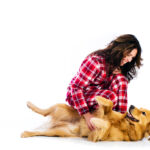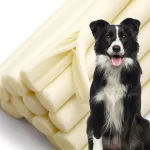How To Stop Dog From Drinking Too Much Water
Is Your Dog Drinking Too Much Water? Here’s How to Stop It
Water is essential for dogs, just like it is for humans. However, if your dog seems to be drinking more water than usual, or gulping it down too quickly, it could be a sign of a problem. Excessive thirst and urination can indicate various health issues, from diabetes and kidney disease to hormonal imbalances and infections. Moreover, drinking too much water can cause other problems, such as bloating, vomiting, diarrhea, and even water intoxication. Therefore, as a responsible pet owner, you should monitor your dog’s water intake and behavior, and take action if necessary.
Here are some tips on how to stop your dog from drinking too much water:
1. Check your dog’s overall health
Before trying any specific remedies or training techniques, you should consult your veterinarian and get your dog checked for any underlying medical conditions that might affect their thirst. Your vet may perform blood tests, urine analysis, X-rays, ultrasounds, or other exams to diagnose the cause of excessive drinking. Depending on the diagnosis, treatment may involve medication, diet changes, surgery, or other interventions. In some cases, however, there may not be a clear medical reason for your dog’s thirstiness.
2. Provide fresh and clean water
Assuming that your dog is healthy but thirsty, one way to regulate their water intake is to provide them with fresh and clean water at all times. Dogs prefer cool and running water over stagnant or warm water. Therefore, you should change your dog’s water bowl regularly (at least once a day) and use filtered or bottled water if possible. You can also try using a pet fountain or a dripping faucet to entice your dog to drink more slowly and steadily.
3. Control the amount of water
Another way to limit your dog’s access to water is to control the amount and timing of their drinking. You can measure the amount of water your dog drinks by using a graduated container or noting the level of the water bowl before and after each refill. You can then adjust the volume based on your dog’s size, age, weight, activity level, and weather conditions. For example, a small dog may need only half a liter of water per day, while a large dog may need up to two liters. However, you should not restrict your dog’s water intake too harshly or abruptly, as this can lead to dehydration and other problems.
4. Offer ice cubes and treats
If your dog is addicted to drinking water excessively or too fast, you can distract them with some ice cubes or frozen treats. These can help cool down your dog’s mouth and throat, slow down their drinking pace, and provide some entertainment and stimulation. You can make your own ice cubes by freezing diluted chicken broth, yogurt, fruit juice, or other safe liquids in an ice tray or a toy. You can also buy commercial frozen treats that are designed for dogs.
5. Train your dog to drink calmly
Finally, you can train your dog to drink more calmly and slowly by rewarding them for good behavior and discouraging them from bad habits. You can use positive reinforcement techniques such as clicker training or treat rewards to teach your dog to approach the water bowl calmly, take small sips, pause between drinks, and back away when they are done. You can also use negative reinforcement techniques such as verbal cues (“no,” “wait,” “slow”), withholding treats or toys until your dog behaves appropriately, or interrupting their drinking with a loud noise (such as clapping). However, you should avoid punishing or scolding your dog for drinking too much water, as this can create anxiety and confusion.
In conclusion, if you want to stop your dog from drinking too much water, you should first rule out any medical issues, then provide fresh and clean water, control the amount and timing of drinking, offer ice cubes and treats, and train your dog to drink calmly. By doing so, you can ensure that your dog stays healthy, hydrated, and happy. Just remember not to overdo it with the rules or the jokes, as dogs appreciate consistency and clarity more than humor or complexity.



